We’ve collected the best 16 intermediate calisthenics workouts for beginners who want better results.
In this massive post you’ll get:
- Muscle up routines
- Back lever routines
- Front lever routines
- Fundamental rules for muscle growth.
- And lots more.
(It almost seem too good to be true, right?)
These intermediate calisthenics workout plans will take your training to the NEXT level.
Ready?
- 1. Routines For The Muscle Up
- 2. Routines For The Back Lever
- 3. Routines For The Front Lever
- 4. Routines For The Planche
- 5. Routine For The Human Flag
- 6. Pistol Squat Routine + 1 Bonus Leg Killer Routine
- 7. Levels Of Intermediate Training Schedules
- 8. Level 1: Intermediate Rookie
- 9. Level 2: Intermediate Beginner
- 10. Level 3: Intermediate Veteran
- 11. Bonus Tip: Fundamentals For Muscle Growth
Extra Motivational Tips: Download the free guide and discover what little book I used to keep myself motivated while doing these routines and how I used this special book to master all of these skills 100%.
Calisthenics Workout Routine Time
These routines require a strong foundation.
Don’t jump into them too early, or you might end up hurting yourself.
If you combine a strong foundation with these specific drills, new levels of skill will unlock to you.
FAST.
Essentially there are 5 intermediate strength skills which you want to aim for:
-
-
- Front lever
- Back lever
- Planche
- Muscle Up
- Pistol Squat
-
These intermediate skills are covered in the routines.
Different skills will have a different effect on your body and doing just one skill comes at the expense of something else.
Those are factors to keep in mind when building the body you want.
How do you start? 4 simple steps.
1) First set a a clear goal in terms of what skill(s) you want to master.
2) Find a routine that matches your specific goal.
3) Determine how often you are going to train for that specific goal. This needs to be at least 3 days a week.
4) Take action.
It’s not rocket science and while it’s easy to do.
It’s also easy not to do.
Now that you’ve written down those goals. Let’s get started.
Routines For The Muscle Up
If you are like most people it’s probably the muscle up that caught your attention first.
9 out of 10 times it’s the number one goal on the list of beginners.
The quality of the execution plays a very big role in what you actually get out of the move.
There is a big difference between a strict and a kipping muscle up.
The former uses very little motion generated from the legs, while the latter does the opposite and tries to maximise motion from the legs.
And as a result increases the ease of the exercise at the cost of the adaptive forces.
The muscle up is a combination of both pulling and pushing exercises which makes it an integral compound movement for people beyond the beginner level.
If you aren’t too sure about the quality of your muscle up, make sure you read The Minimalist Guide To A Muscle Up For Beginners.
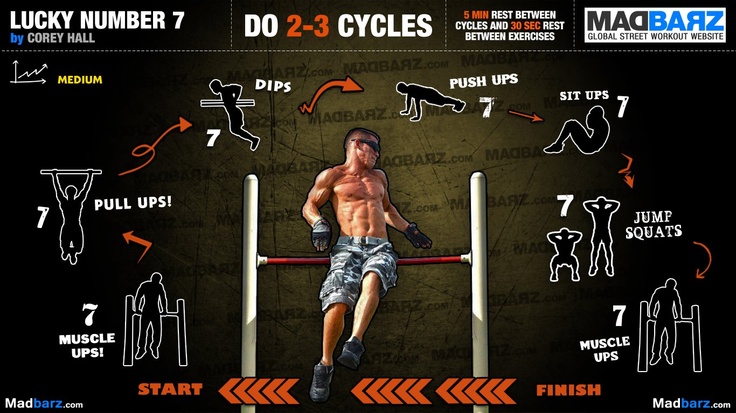
Routines For The Back Lever
Generally the back lever is the first ‘intermediate’ foundational skill that most people achieve.
The postition of the body provides you with a biomechanical advantage which makes it much easier than the front lever.
A good back lever in turn can contribute to a better front lever and the same goes the other way around.
The skills aren’t both indicative however.
Someone with a good front lever will generally also have a back lever, someone with a good back lever doesn’t necessarily have a good front lever.
A big emphasis in the back lever is placed on the ability of the shoulders to stay active in the horizontal position.
A skin the cat and the tucked back lever are essential exercises to develop what is referred to as protraction of the shoulder blades.
Where the shoulder blades are pushed away from each other actively.
For more information read The Back Lever Progression For Beginners.
Routines For The Front Lever
The front lever is a foundational high level skill that will put a great emphasis on a strong core and especially strong lats.
Contrary to the back lever the front lever focuses on retraction, or the pulling together of the shoulder blades.
The combination of both active lats and retracted shoulder blades will allow you to stay in the air horizontally.
Easier variations such as leg raises and back levers will help you in the development of the front lever.
Routines For The Planche
The planche is one of those skills many people wish to have, but few actually achieve.
The required level of strength coming both from the shoulders and lower back is beyond what most people can even comprehend.
Nevertheless it’s a great goal to have and an amazing isometric exercise for higher level skills.
Planche work can be combined with front or back lever work in order to balance both pushing and pulling with straight arms.
This implies that all the strength comes from the shoulder connection.
Whereas with the muscle up, part of the bicep/tricep is used to a greater extent.
For a more detailled explanation read Your Road To The Straddle Planche.
Routine For The Human Flag
Similar to the front and back lever, the human flag is a straight arm element.
The emphasis in this case is placed mostly on the obliques or the sides of the abs in addition to the shoulder and the lats.
While it’s a great sight to see and a nice goal to have, it doesn’t translate to more advances moves in a way that would make you want to choose it over the back lever, planche or front lever.
But if it’s on that bucket-list of yours, it’s definitely a great goal to have.
Pistol Squat Routine + 1 Bonus Leg Killer Routine
It is well documented that leg training aids in overall upper body strength.
Not training your legs only backfires in the long run.
Contrary to the shoulders which are capable of very complex movements, the legs rely mostly on intensity.
They carry your entire weight during the day and are therefore mostly consisting of different types of fibres which need to be recruited in a different way.
These routines will make sure you know you’ve had a leg day the day after.
If you are still struggling with pistols, make sure you read The Guide To Learn The Pistol Squat.
3 Levels Of Intermediate Training Schedules
At an intermediate level you have the basics down.
Not only do you have them down with good quality, but you also integrate them into your warming up.
The basics become a conditioning tool to get your muscles and body ready for the higher strength requirements of intermediate skills.
Level 1: Intermediate Rookie
You want to see some results, but aren’t really committed.
The rookie level is the bar minimum of training required to see any type of results.
Chances are that if you are at an ‘intermediate level’ already you probably workout more than 3 days a week consistently.
If you aren’t or never have, you most likely lack connective tissue strength.
Still, if you are looking for an easy workout schedule for intermediate training.
This will provide you with a good schedule to rely on.
Level 2: Intermediate Beginner
You are looking for a high intensity training schedule with ample rest.
The intermediate beginner level will give you less rest than the rookie schedule and a higher intensity.
But in between days you will still have enough time to recover even if you don’t actively focus on it.
Combining pushing and pulling schedules with both bent and straight arm focused skills.
In addition to a better balance between leg and upper body strength for an overall stronger body.
Level 3: Intermediate Veteran
You are serious and willing to train most if not every day.
At the veteran level you’ll have to focus on your rate of recovery for a significant amount of time.
The harder you train the harder you’ll need to recover.
Without proper focus on recovery you will not sustain this type of training for a long period of time.
As with any routine or workout schedule, it all depends on your goals.
These 3 workout plans serve as a tool which you can use to design your own plan.
Keep in mind that your warming up is a key to a good workout.
At this level if you haven’t been focusing on flexibility you will find yourself in a tight suit.
The front pike is a good place to start working on flexible hamstrings with calisthenics.
NEVER make concessions on your warming up and your flexibility.
At the intermediate level, you probably already know this.
Still, it cannot be repeated enough.
Bonus Tip:
There are 3 fundamental rules to muscle growth and a good routine is just one.
If you don’t take care of the other two fundamentals you will not get the results you want.
Want to know what the second fundamental rule is?
Make Your Own Calisthenics Workout Plan
No workout plan is the same.
As you progress from beginner to intermediate, you’ll realize that the name of the game is: “Individualization”.
You’ll need to develop the skill to draw your own picture.
What do you want to achieve? Are you really ready?
Part of development and becoming better is realizing that you will need to start taking responsibility for your achievements.
If it were easy every Bar Brother would do these exercises.
The secret? It’s all about perfecting the basics first.
You need to make sure that your basics are flawless.
You need to be able to do them with your eyes closed.
I know you are thirsty for more.
But when you drink the water.
Remember the spring.
Beast Mode ON!
Now I’d like to hear from you:
Did you like this post? What other routines have you come up with?
Or maybe you have a question.
Either way, make sure you get your download and leave a quick comment below right now.
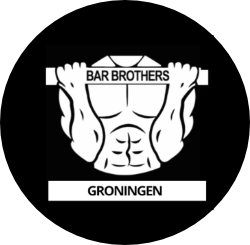

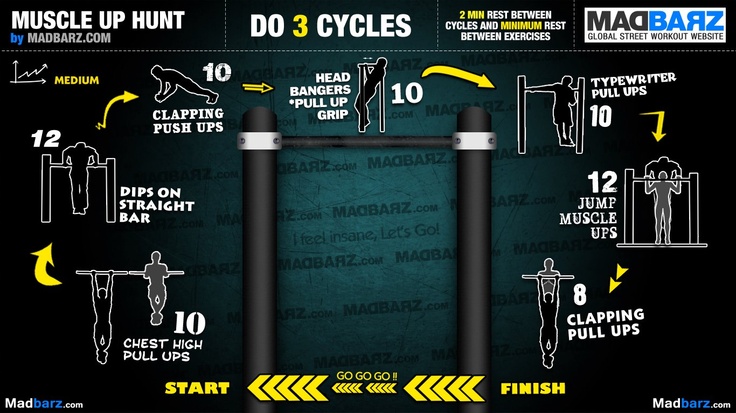
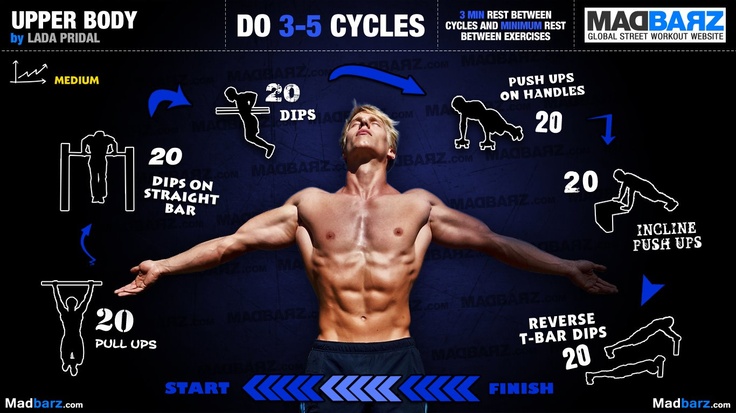
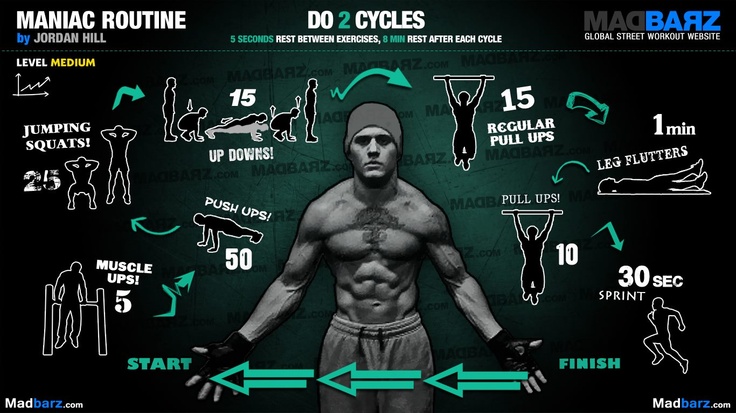
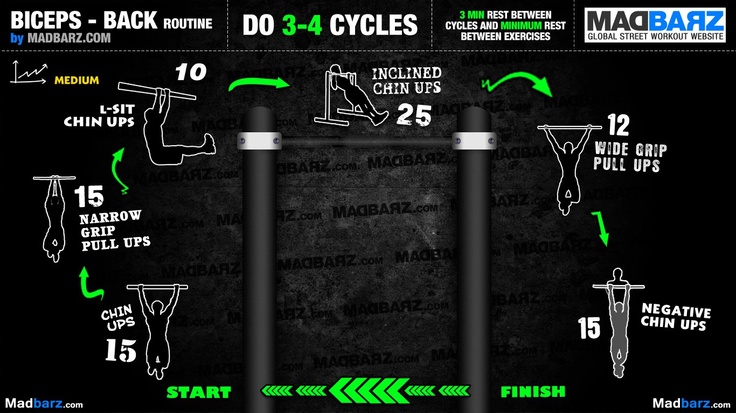
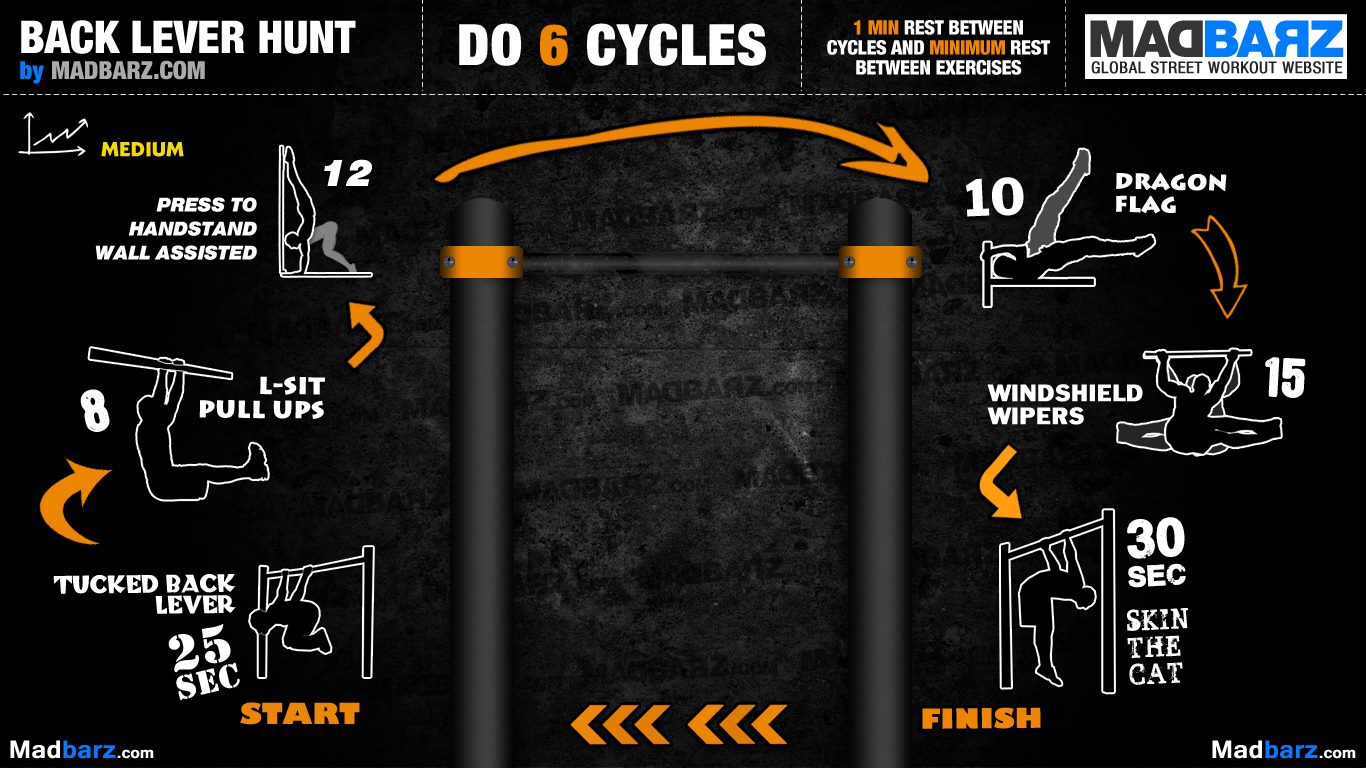
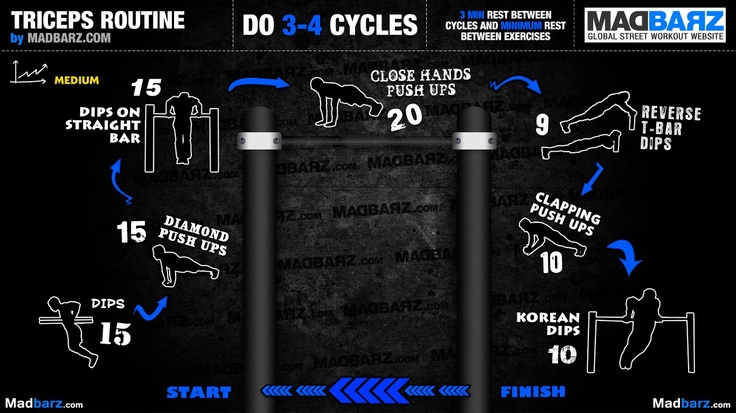
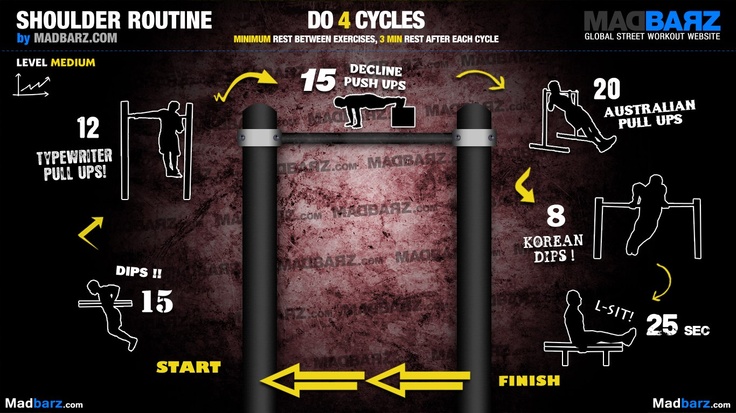
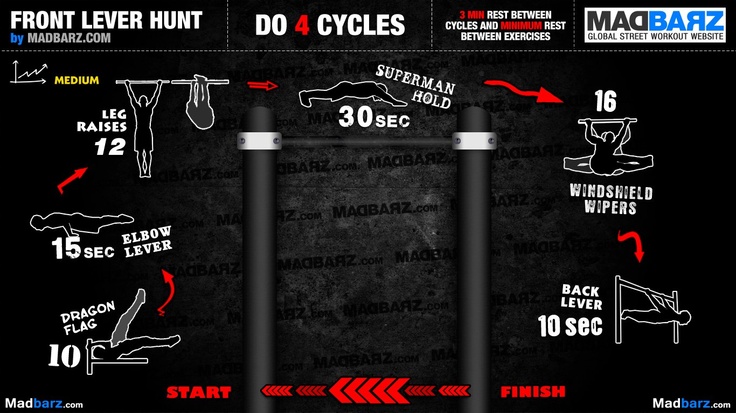
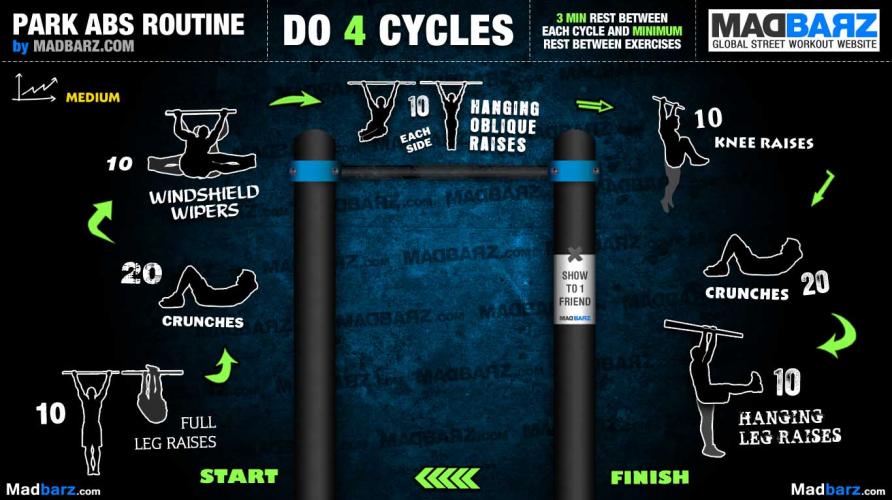
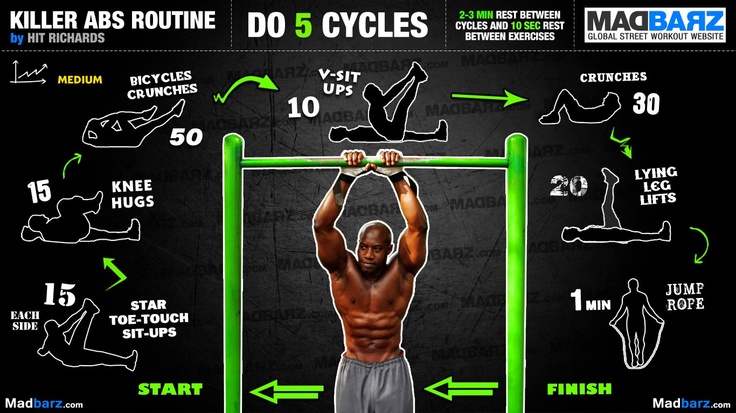
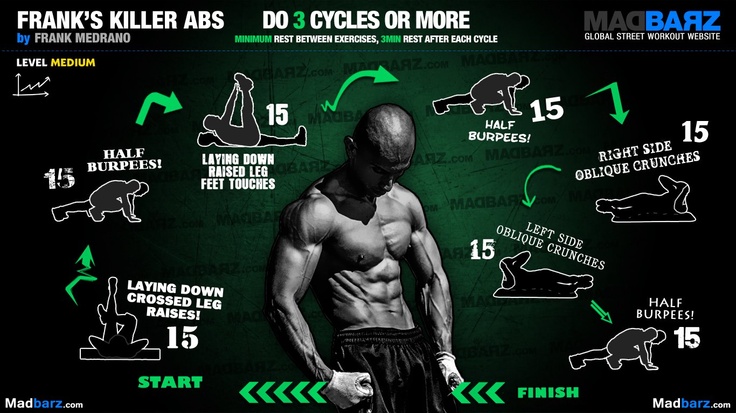
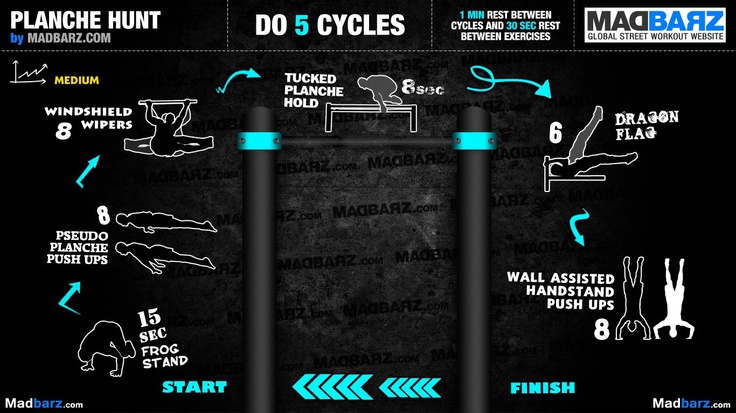
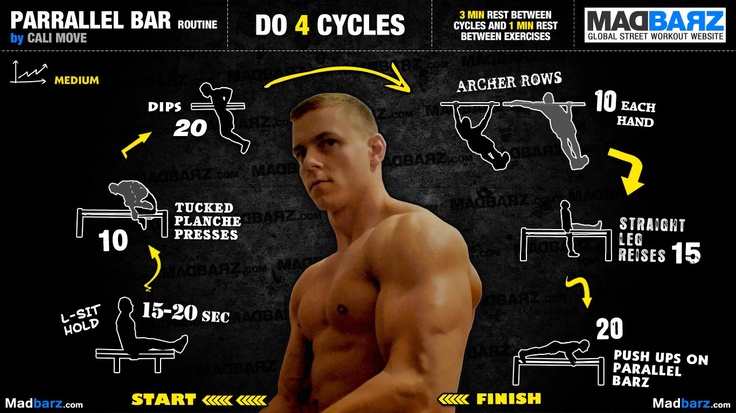
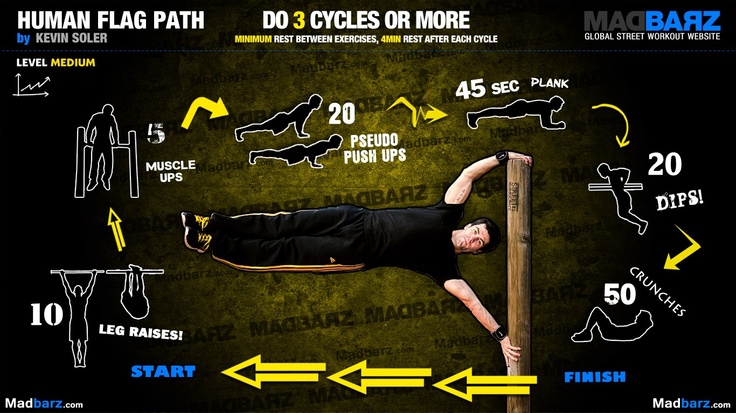
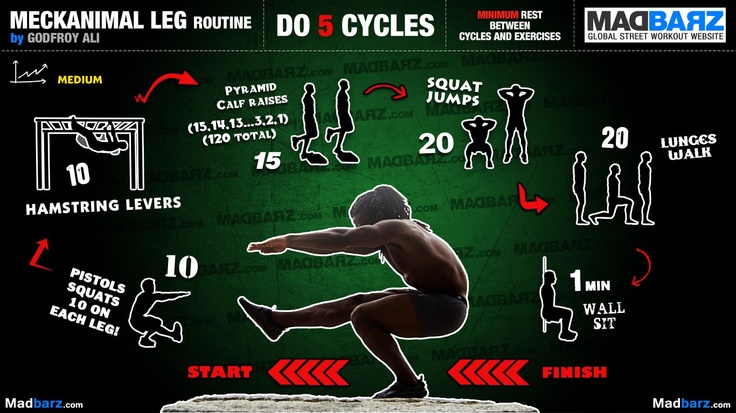
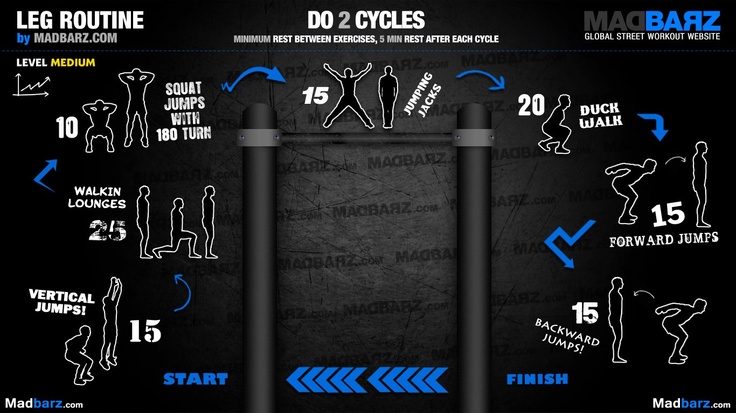
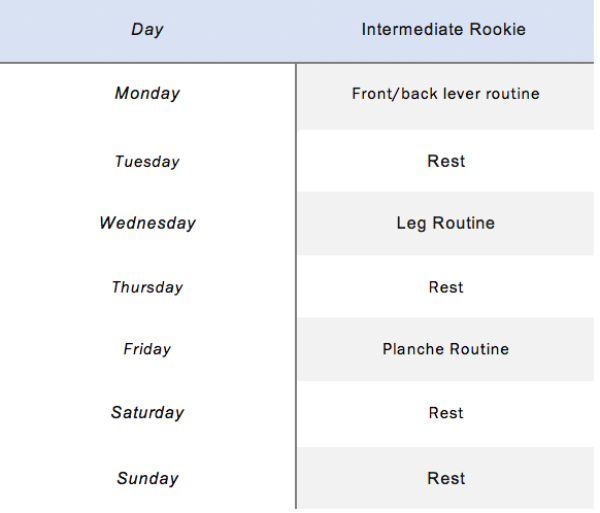
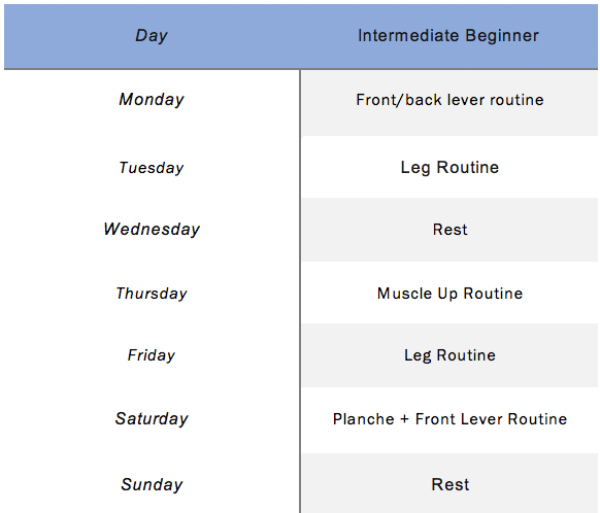
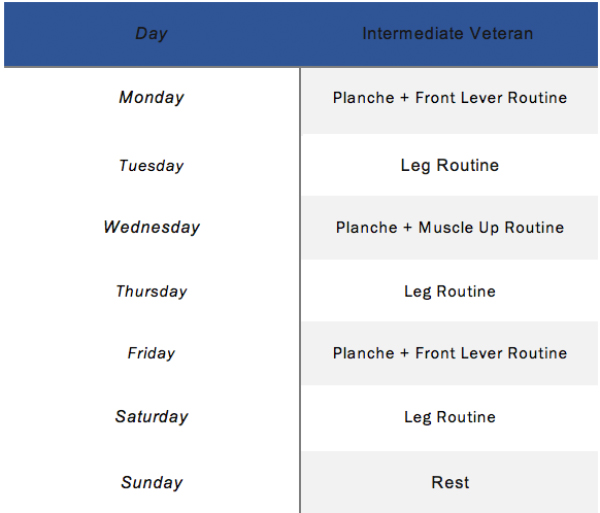
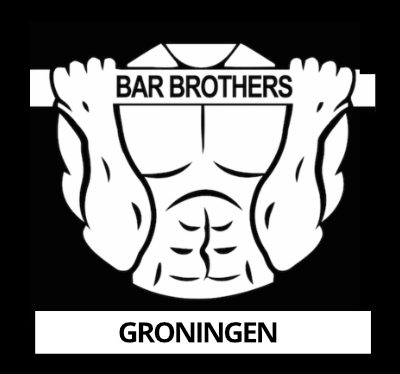
Hey,
Great site with awesome exercise here. I am in the 16 killer workout intermediate system, Just wondering, what you suggest to reduce the sets or reduce the reps by a certain amount. I mean if i have a routine which says 5 sets, can i reduce it to 3-4 sets or should i reduce the reps by like 5 for every routine in a cycle to keep a balance. I seem to start losing will with a 5 set routine. i end up doing them, but i see i lose motivation after like 3 sets with long routines. Can’t one be as effective with only 3 sets maximum?.. your thoughts and experience please.
Hey Manuel,
First of all thanks for the message!
It really depends on your goals, but initially I’d say reduce the amount of sets. Then again, what are you focusing on more, endurance, strength etc.?
If you get bored by doing 5 set routines, stick to 3 sets of intense reps, focus on time under tension and then shift it up to another routine for some variety.
Time under tension and the quality of your execution is much, much more important than the amount of reps.
Beast mode ON!
Thanks bro for this .. really helps a lot! Was just asking if there’s more human glag routines to do??
Hey Viliame,
At this point I haven’t made another post yet. But I’ll keep it in mind and will make a more progression like blog in the coming weeks.
Beast mode ON!
Is it normal that I can do some exercises in the intermediate and advanced level yet can’t do a pull up starting calisthenics I was uneducated for 5 months and I worked heavily on some muscles and didn’t even know others existed.
Hey Sheriff,
Great question.
That might definitely be possible if you’ve done a lot of pushing work and no pulling work.
Keep in mind that imbalance is a greater ‘indicator’ of future injuries than lack of strength is in most circumstances.
Beast mode ON!
Hi,
I’m really appreciating your advice. I only started calisthenics in December. I am quite overweight at 15 stone and 5 feet 9 and 34 years old. That being said my strength has been increasing rapidly. I am training 3 nights a week and have been doing 5 sets of pull ups with between 5 and 2 reps ( I couldn’t do a single one when I started and had to do negatives).
Next I have been doing sets of pseudo planche push-ups 4 sets of 12 with one leg held up. 4 sets of pseudo planche holds, 4 sets of tiger push ups, and 4 sets of lying leg raises. Sometimes I do some wall hand stand push-ups too. I’m trying to build muscle at the same time as doing cardio on the other days to burn fat- which I do seem to be doing. Does this sound like an effective routine to you or would I benefit from a different one- I am following your dietary advice too!
Obviously on the other days
Hey Tim,
You are more than welcome!
Big respect! You made some tremendous progress over a short period of time.
It all depends on your goals not just in terms of bodyrecomposition, but also in terms of skill. If this works for you stick to it.
With regard to burning fat…in all honesty cardio is the least effective way to do it. I know it sounds weird, but your diet plays a much bigger role. “You cannot outrun a bad diet, unless you are an Olympic marathon runner”, which I assume you aren’t.
To lose more fat, pay more attention to your diet. Cut out the processed stuff, introduce nutrient rich stuff, make sure you earn your carbs. I’ve written about this more extensively in the diet guide, which I’m sure you’ve read ;).
Keep doing what you are doing, you are on the right path.
Beast mode ON!
*i am doing cardio to burn fat- which is working.
Hi,
I’m looking to incorporate some of the routines above with my weight training, I have a pretty good base for strength but wanted to know if there was any kind of routines that work well together like front and back lever routines etc.
Hey Jack,
Great question!
Sounds like you should be ready then, just keep a close eye on your connective tissues. General weight training will not prepare you for the loads and the angles under which you put those loads on your joints.
If you are looking for routines that work well together, I’d recommend combining pulling and pushing routines. This way you balance the two opposites of the upper body.
A front/back lever routine would match well with a planche routine.
A muscle up routine is both pulling and pushing so that would be more of a routine by itself, because it combines both worlds.
Of course you shouldn’t forget about the legs ;), but I’m sure you’ll know what to do about those.
Hope this answers your question.
Beast mode ON!
hey …
i saw all this routines and what i saw that in every skill i have 3 or 4 different routines and i have some questions:
1) how should i know which routine will i choose for every skill??
2) is this routines enough for my week workout or it is in addition to my full body workout??
i hope you will answering me ..
thanks
Hey Haytam,
This depends on your personal preference.
Go try it first ;). You’ll see.
Beast mode ON!
Hey,
My goal is to build strenght. Shoud I do hypertrophy or circut training?
Hey Rajic,
Great question.
If you want to build strength, do strength training ;).
Use strength based rep ranges: http://www.barbrothersgroningen.com/repetitions-strength-mass-endurance/
Beast mode ON!
if i want to build mass and strenght?? Great routine btw
Hey Aldo,
Great question.
You’ll need to focus on your diet in addition to your training.
You can find a free diet guide here: http://www.barbrothersgroningen.com/calisthenics-meal-plan/
And more information here: http://www.barbrothersgroningen.com/calisthenics/
Beast mode ON!
Hey bar brothers one question i have is should i lower my body fat to single digits to get the best results from calisthenics? im currently at about 12 % body fat and am looking to go lower. I also currently do 1000 pushups and 500 situps everyday and dips pistol squats ect. Any tips?
Hey Isiah,
Great question. No, not necessarily. It all depends on your overall goals.
Doing 1000 push ups might seem like much, but it’s not something that will make you really strong. You need to increase the complexity of the move. Push up > one arm push up > handstand push up etc.
Instead of doing more of an easy move, do less of a HARD move. That’s how you really become stronger.
Beast mode ON!